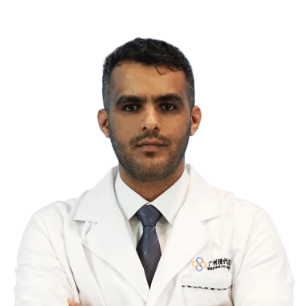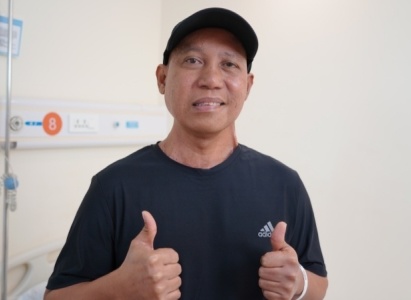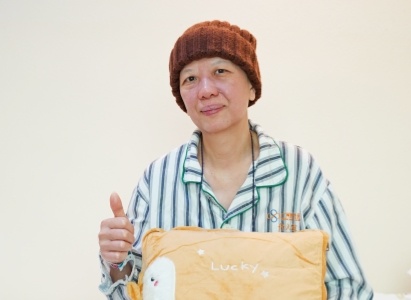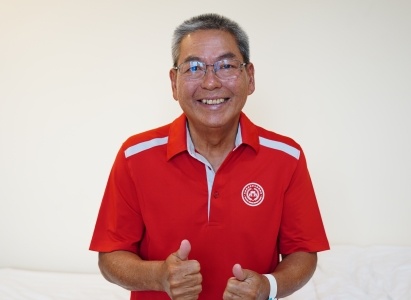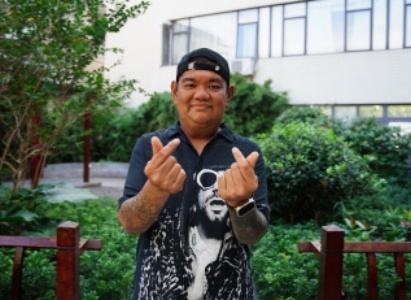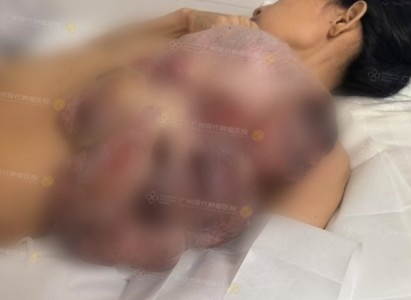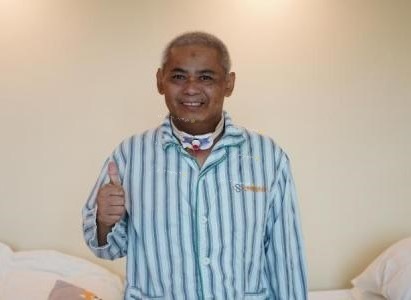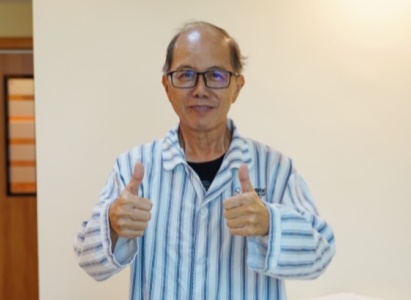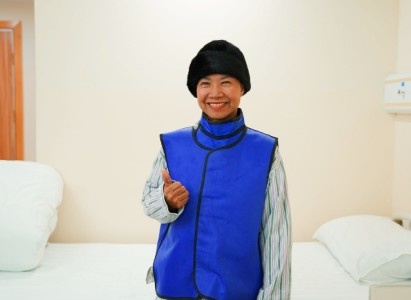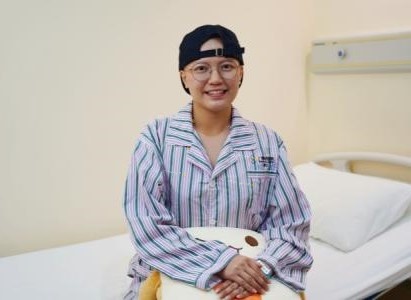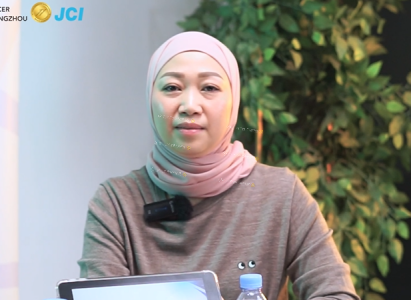Integrated Minimally Invasive Treatment for Pancreatic Cancer – A Surgery-Free Approach
Is Surgery Really the Only Option for Pancreatic Cancer? Does a Pancreatic Cancer Diagnosis Mean No Chance of Cure?
Meet Ms. Lin (pseudonym) from Malaysia – living proof that pancreatic cancer can be controlled without radical surgery, chemotherapy or radiation.
At Modern Cancer Hospital Guangzhou, she defied late-stage pancreatic cancer through painless, non-surgical minimally invasive treatments.
At Modern Cancer Hospital Guangzhou, she defied late-stage pancreatic cancer through painless, non-surgical minimally invasive treatments.
Cancer isn’t necessarily a dead end – the right choice brings hope.
In December 2017, 67-year-old Ms. Lin was diagnosed with stage IV pancreatic cancer and peritoneal metastasis at a local hospital due to reduced bowel movements and worsening abdominal pain and bloating. Given her age and high surgical risks, doctors recommended chemotherapy, but she declined over concerns about side effects.
In despair, she learned online about Mr. Zhang Huimin, a 78-year-old Malaysian lymphoma patient successfully treated at Modern Cancer Hospital Guangzhou. After contacting him, Ms. Lin and her family decided to seek treatment in Guangzhou.
On January 31, 2018, Ms. Lin was admitted. After thorough examinations, our MDT team designed a personalized treatment plan combining: Interventional therapy + Targeted minimally invasive therapy integrating Chinese and Western medicine + Green therapy.
“When I first arrived, I was weak, emaciated, and constantly nauseous—barely able to sleep. After treatment, my CA-125 tumor marker normalized, and my energy, strength, and appetite improved significantly. Now I can walk on my own—no more wheelchair!” Ms. Lin shared gratefully.
In despair, she learned online about Mr. Zhang Huimin, a 78-year-old Malaysian lymphoma patient successfully treated at Modern Cancer Hospital Guangzhou. After contacting him, Ms. Lin and her family decided to seek treatment in Guangzhou.
On January 31, 2018, Ms. Lin was admitted. After thorough examinations, our MDT team designed a personalized treatment plan combining: Interventional therapy + Targeted minimally invasive therapy integrating Chinese and Western medicine + Green therapy.
“When I first arrived, I was weak, emaciated, and constantly nauseous—barely able to sleep. After treatment, my CA-125 tumor marker normalized, and my energy, strength, and appetite improved significantly. Now I can walk on my own—no more wheelchair!” Ms. Lin shared gratefully.
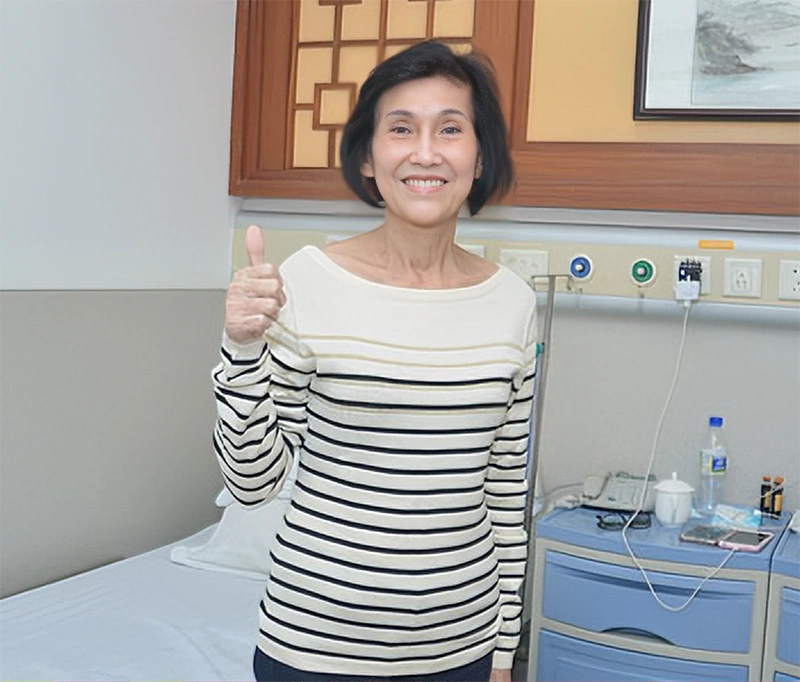
Why Minimally Invasive Technology Becomes the Preferred Choice for Pancreatic Cancer Treatment?
Pancreatic cancer is often diagnosed at advanced stages with local or distant metastasis. Even without obvious symptoms, the cancer may have already spread to other organs.
Moreover, given the pancreas’ proximity to critical organs like the spleen, traditional surgical resection carries high risks, while radiation therapy often causes significant side effects. These conventional approaches not only challenge patients’ physical endurance but may also compromise the immune system, ultimately affecting treatment outcomes.
In contrast, minimally invasive oncology therapy offers a new hope for pancreatic cancer patients with its distinct advantages: minimal trauma, rapid recovery, proven efficacy. This makes it a safer and more effective treatment alternative for pancreatic cancer management.
Moreover, given the pancreas’ proximity to critical organs like the spleen, traditional surgical resection carries high risks, while radiation therapy often causes significant side effects. These conventional approaches not only challenge patients’ physical endurance but may also compromise the immune system, ultimately affecting treatment outcomes.
In contrast, minimally invasive oncology therapy offers a new hope for pancreatic cancer patients with its distinct advantages: minimal trauma, rapid recovery, proven efficacy. This makes it a safer and more effective treatment alternative for pancreatic cancer management.
Minimally Invasive Treatment
1、1-2mm traumaMinimal blood loss
Low infection risk
Promising prognosis
2、Negligible side effects
Synergistic effect with
immunotherapy to enhance immune system
3、Effective tumor control with minimal
discomfort Significantly extends survival
Traditional Treatment
1、Surgical Resection:Large trauma
Significant blood loss
High infection risk
Poor prognosis
2、Radiotherapy and Chemotherapy:
Severe side effects
Weaken immune system
3、Palliative Care:
Symptom management only No curative intent

Why choose Guangzhou Modern Cancer Hospital for pancreatic cancer treatment?
Why choose Guangzhou Modern Cancer Hospital for pancreatic cancer treatment?
The treatment of pancreatic cancer often requires consultation with various specialists, such as surgeons, oncologists, and gastroenterologists.
The primary objective of pancreatic cancer treatment is to remove the entire tumor along with the cancerous cells. If curative treatment is not feasible, then the main goal is to halt tumor growth. In advanced cases, where treatment is less likely to yield favorable outcomes, the primary aim shifts to palliative care, ensuring that the patient has the best possible quality of life.
The treatment of pancreatic cancer often requires consultation with various specialists, such as surgeons, oncologists, and gastroenterologists.
The primary objective of pancreatic cancer treatment is to remove the entire tumor along with the cancerous cells. If curative treatment is not feasible, then the main goal is to halt tumor growth. In advanced cases, where treatment is less likely to yield favorable outcomes, the primary aim shifts to palliative care, ensuring that the patient has the best possible quality of life.
| Oncology Hospitals in Malaysia | VS | Modern Cancer Hospital Guangzhou |
| For pancreatic cancer, surgical resection, radiotherapy, and chemotherapy remain the mainstay treatments. However, most patients are diagnosed at an advanced stage, where traditional treatments offer limited efficacy. To alleviate patients’ suffering, they are often advised to forgo prognostic treatment in favor of palliative care to improve their quality of life. | Technology | Centered around minimally invasive treatments, even patients with advanced pancreatic cancer can alleviate treatment-related suffering while preserving therapeutic efficacy as much as possible and enhancing their quality of life. |
| Single Treatment Model | Treatment Model | Multidisciplinary Treatment Model |
| Most hospitals in Malaysia have weak postoperative care protocols. Many cancer patients miss out on survival opportunities due to the lack of standardized postoperative care. | Postoperative Care System | Adopts a full-cycle treatment approach, encompassing pre-treatment consultation, specialized treatment, and postoperative recovery. Throughout the entire process, patients are cared for by a professional team, ensuring a reassuring “continuous medical care” experience even after discharge. |
| Complicated treatment processes, long waiting times for appointments, and extended delays in receiving test results are common challenges faced by patients seeking medical care. | Others | Guided by the “patient-centered” philosophy, our hospital employs an efficient treatment process. Patients can commence treatment immediately upon admission, with a hospital stay lasting only 7-14 days. This significantly shortens waiting times and enhances treatment efficiency. |
What Are the Advantages of the MDT (Multi-Disciplinary Treatment)?
One-stop service: The MDT model brings together experts from multile relevant departments to jointy discuss patient conditions and provide integrateddiagnosis and treatment services, eliminating patients" need to repeatedly visit different departments.Ful-cycle
management: Covering the entire treatment process from diagnosis to treatment, rehablitation, and folowup, the MDT model ensures palientsreceive consistent and comprehensive medical care throughout their treatmentPersonalized plans; Based on patents specic conditions and needs, DT teams can develop tailred diaonosis and treatment plans to enhance treatmeniprecision and effectiveness
Comprehensive care: The MDT model combines multidisciplinary expertise and experience to provide patents with more thorough and in-depth treatmeni solutions.
management: Covering the entire treatment process from diagnosis to treatment, rehablitation, and folowup, the MDT model ensures palientsreceive consistent and comprehensive medical care throughout their treatmentPersonalized plans; Based on patents specic conditions and needs, DT teams can develop tailred diaonosis and treatment plans to enhance treatmeniprecision and effectiveness
Comprehensive care: The MDT model combines multidisciplinary expertise and experience to provide patents with more thorough and in-depth treatmeni solutions.
Patient Stories
They come from different countries around the world, but they have experienced the same experience and endured the pain that cancer has brought to them. However, now, with the effective treatment and meticulous care of Modern Cancer Hospital Guangzhou, they have rekindled their confidence in life and become anti-cancer fighters. Here, they share their anti-cancer experience, love and warmth with everyone.


















